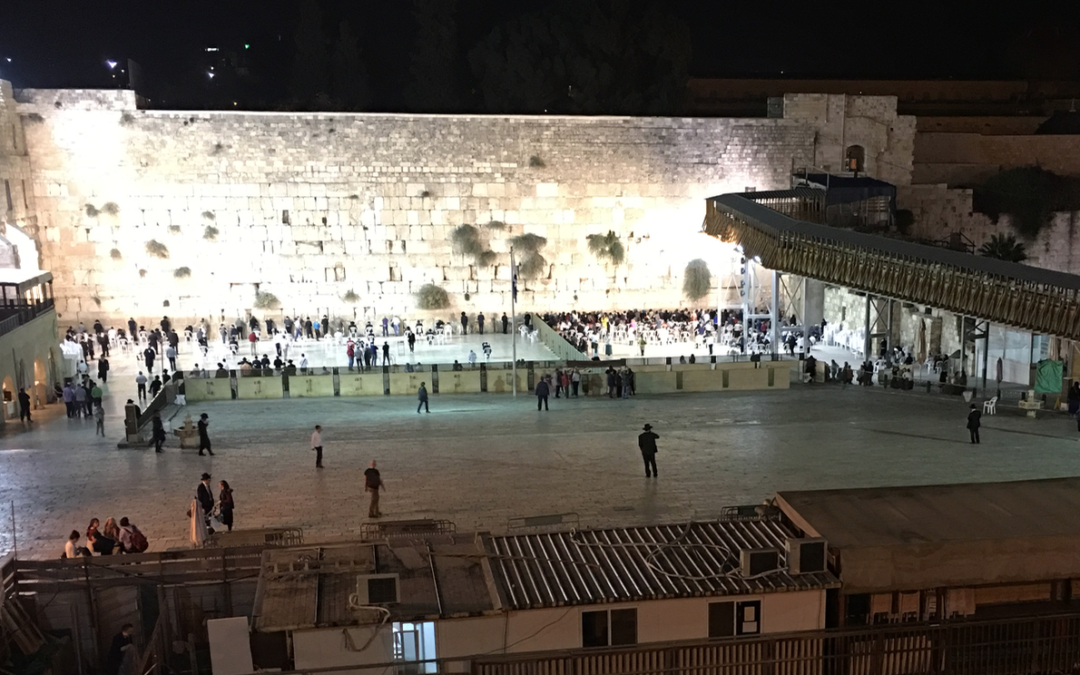Fireside Talk:
Jerusalem’s “Wailing Wall” — a Mingling of Past and Present
Posted November 15, 2016
(Written and Photographed in Jerusalem, November 13-14, 2016)
J. William T. Youngs
This evening I beheld a remarkable site: hundreds of Jews standing and bowing at the “Wailing Wall” in Jerusalem. I had been walking through the Old City with friends Ryan and Sara, moving along narrow stone streets winding through the four quarters of the district, each defined by its distinctive religion and ethnicity: Armenian, Jewish, Christian, and Muslim. We rounded a corner and came upon a great open space below us. At first I could not register what I was seeing, The area was so large.
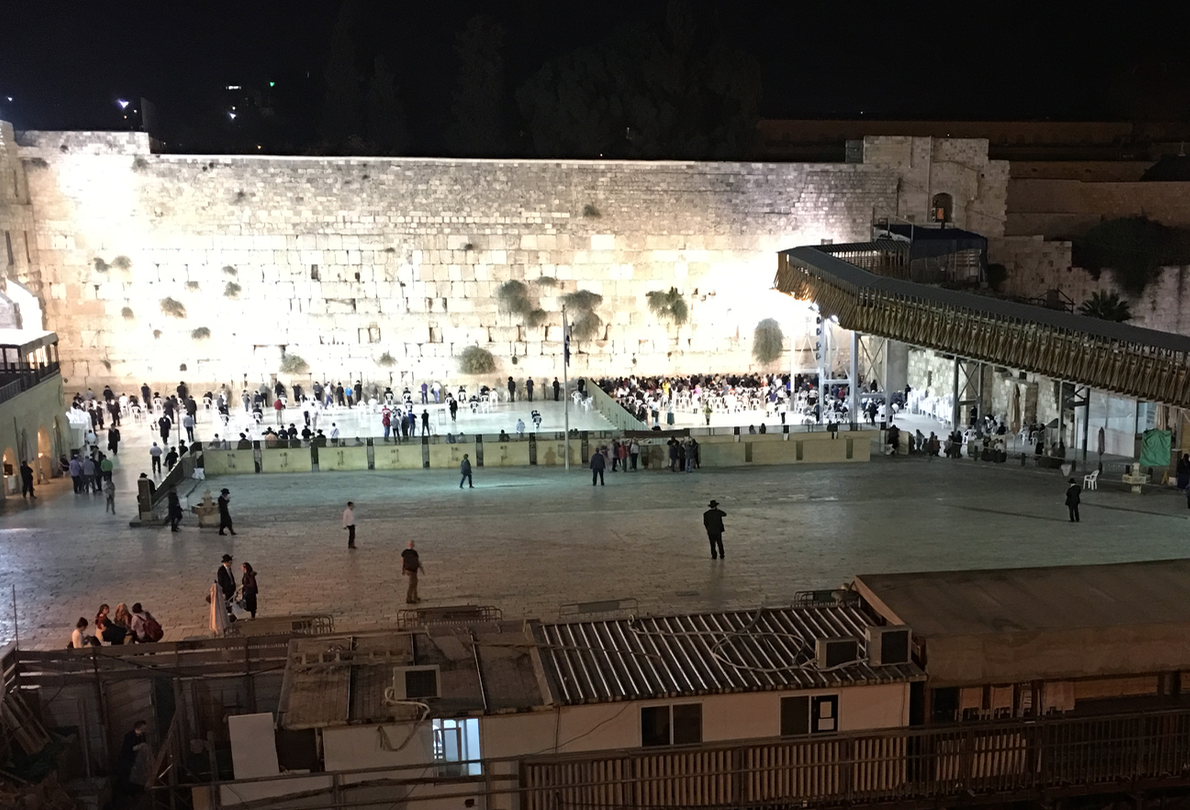
Courtyard and ‘Wailing Wall’
I was looking at a great courtyard, and at the far side crowds of worshipers stood in the night before a long, high wall. Projecting out from the wall, a fence separated men from women. A sign in Hebrew and English told me, “You are approaching the Holy Site of the Western Wall where the Divine Presence always rests.”
(Reflection, November 13, 2020: I could imagine John Muir posting a sign at the entrance to Yosemite saying — “You are approaching a temple of nature, where the Divine Presence always rests”!)
Another sign provided a brief history of the wall and the nearby Temple Mount: “Jewish tradition teaches that the Temple Mount is the focal point of Creation. In the center of the mountain lies the Foundation Stone” of the world. Here Adam came into being. “Here Abraham, Isaac, and Jacob served God….Jews have prayed in its shadows for hundreds of years.”
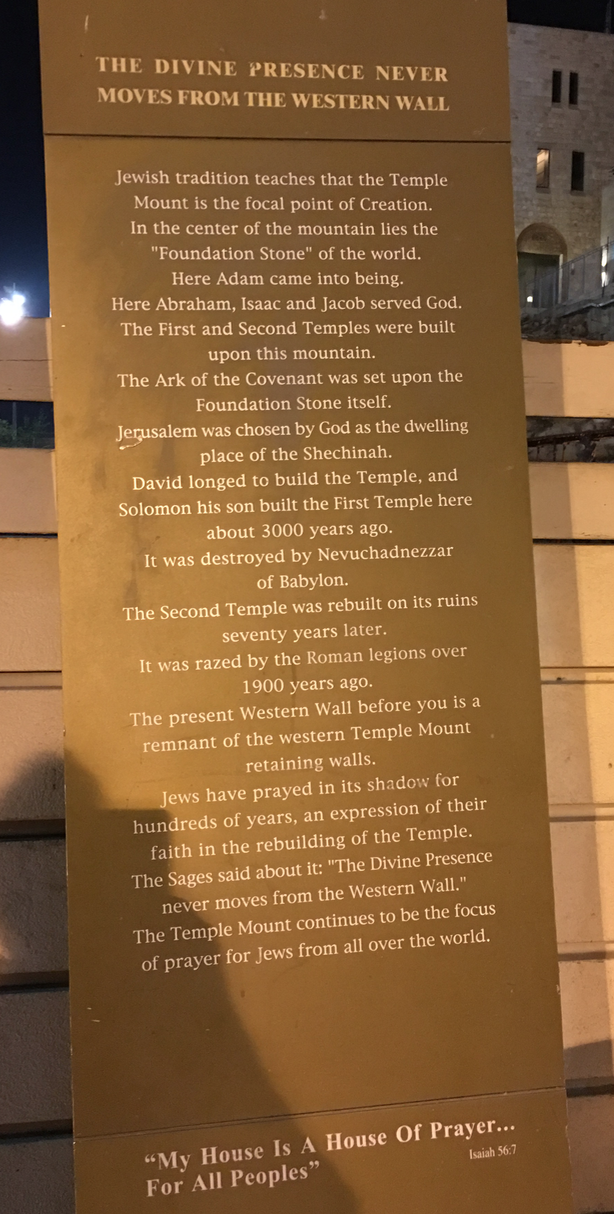
Walking closer we could see huge blocks of stone making up the base of the wall and scores of worshippers dressed in black and wearing the long beards of Hasidic Jews.Following regulations I put on a traditional Jewish cap, or Yamulke, and approached worshippers.
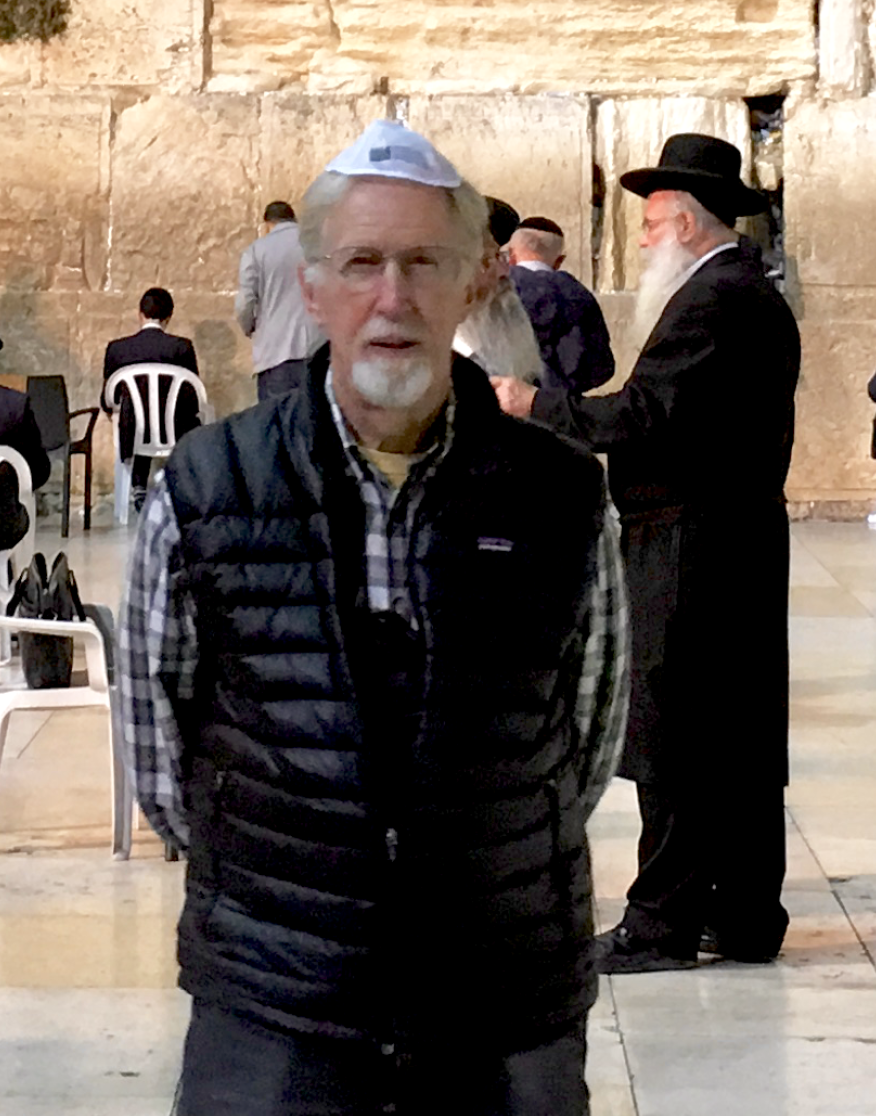
From close up I could watch the faithful bowing toward the wall, signifying respect for ancient tradition.
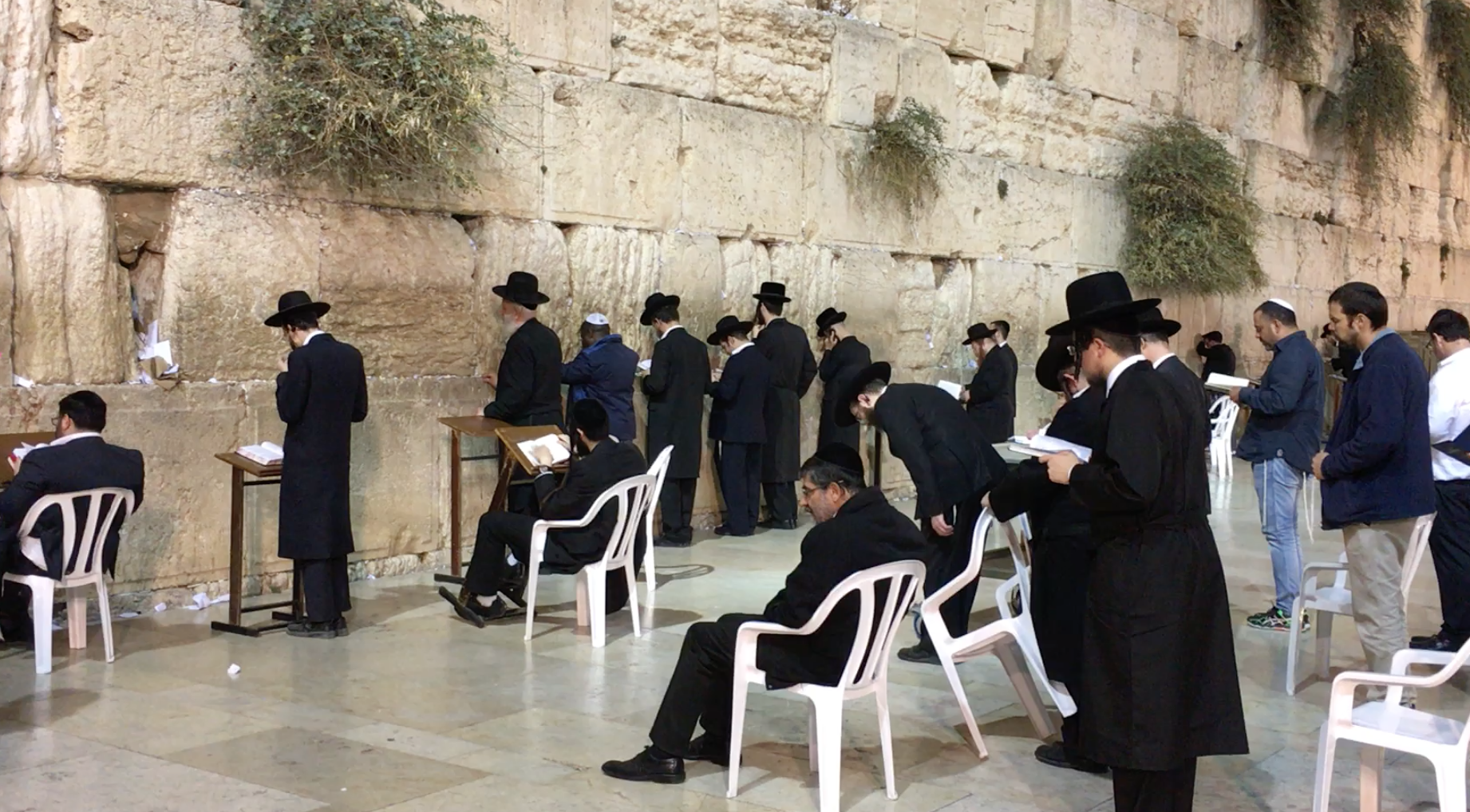
With these gestures they were reenacting a centuries-old ceremony of mourning. The wall itself is the remnant of a edifice that once extended around the Temple Mount. The original temple – Solomon’s Temple — was destroyed about 2500 years ago, and the mourning ceremony is an expression of sorrow at that long-ago loss. (By the way, nowadays the term “Wailing Wall” is considered derogatory, and Western Wall is the preferred – if less well-known — name.)
Now in “The History of National Parks: a Comparative Perspective” I hope we will gain insights into individual parks and into park history as a whole by approaching each park with insights and questions derived from our study of other locales. So here is what I learned the night I arrived in Jerusalem.
The Western Wall as a World Heritage Site
The Western Wall is one in a cluster of places in the city recognized by the United Nations as a World Heritage Site. The area is known officially as “the Old City of Jerusalem and its Walls.” And it includes, besides the wall, the Old City, and the Temple Mount.
For perspective: like our own National Parks, World Heritage Sites can make the list on the basis of either history or nature. In the United States, for example, Yellowstone is a World Heritage site based on its natural attractions. On the historic side Mesa Verde, Cahokia, Independence Hall, and the Statue of Liberty are all history-based National Parks and are recognized also as World Heritage sites.
From the perspective of the ways that we preserve history in our parks, here is what fascinated me about the Western Wall. Unlike other historical places that preserve a “slice of time,” the Western Wall is here in the present as more than an inanimate object, a memorial to a past event, such as a Civil War Battle..
A Mingling of Past and Present
At Capitol Reef National Park we can visit an historic orchard, but not see the Mormon farmers who planted the orchard. At Lowell Mills Historic Park we see and hear the old mill machinery, but not actual mill girls still laboring there – except as historical reenactors. At Independence Hall we can learn about the work of Thomas Jefferson and the other Founders, yet we do not see Jefferson and John Adams and others actually at work.
But at the Western Wall we see artifacts and human beings interacting with those artifacts as they do now in just the way they would have done there three or four hundred years ago.
And that is impressive!
As I wrap up this story and prepare to “turn in” after an exhilarating 48 hours of journeying from Cheney to Jerusalem, another park memory comes to mind. I visited Mesa Verde National Park several years ago. That park preserves cliff dwellings inhabited by Pueblo Indians hundreds of years ago. But unlike the Western Wall in Jerusalem, these artifacts are “lifeless.” No one lives there now, carrying on their own uninterrupted traditions.
And yet….
And yet when I last visited Mesa Verde, the park ranger told his tour group a remarkable story. At his directing, his party of about 20 of us tourists sat down beside the trail leading to the ruins. With those ancient shelters in view, the ranger told us that recently he had led a group of Pueblo men and women to the very spot where we were sitting. For a time, all was silent.
Then they burst into spontaneous song.
The ranger told us that in that moment he could sense the presence of those long-ago native Americans who once lived at Mesa Verde.
I learned tonight in Old Jerusalem as I learned several years ago at Mesa Verde, that the interaction of past and present can produce remarkable encounters. Perhaps there are many places on earth where the divine presence — or at least a powerful sense of historical memory — never leaves
Perhaps we only need the imagination to experience it…
Film Clips: Living History at the Western Wall and Mesa Verde
Worshippers at the Western Wall, 2016
“Guardians” — A National Parks Ranger and Mesa Verde, 2014

